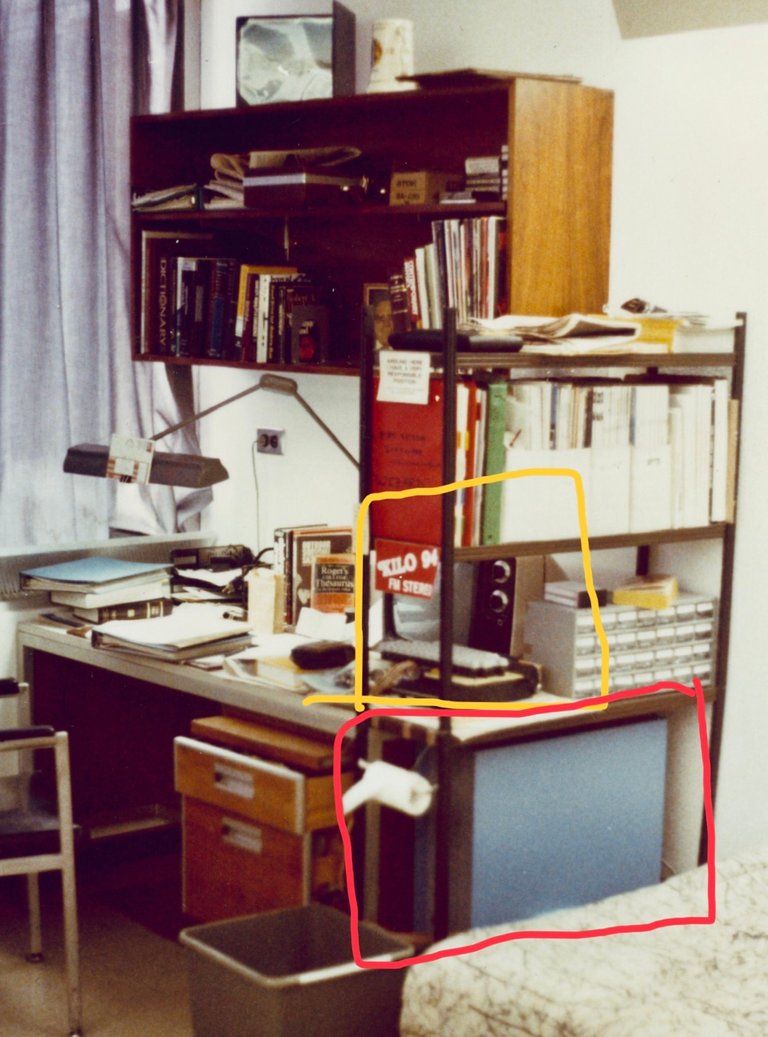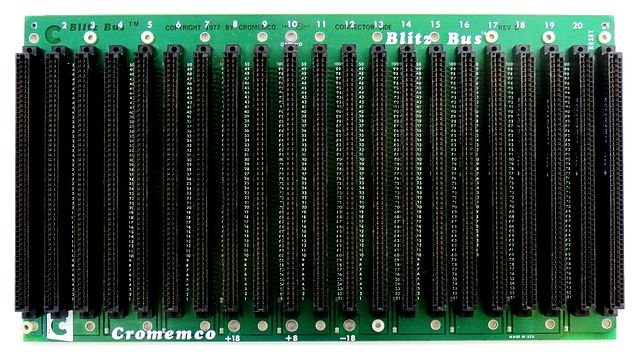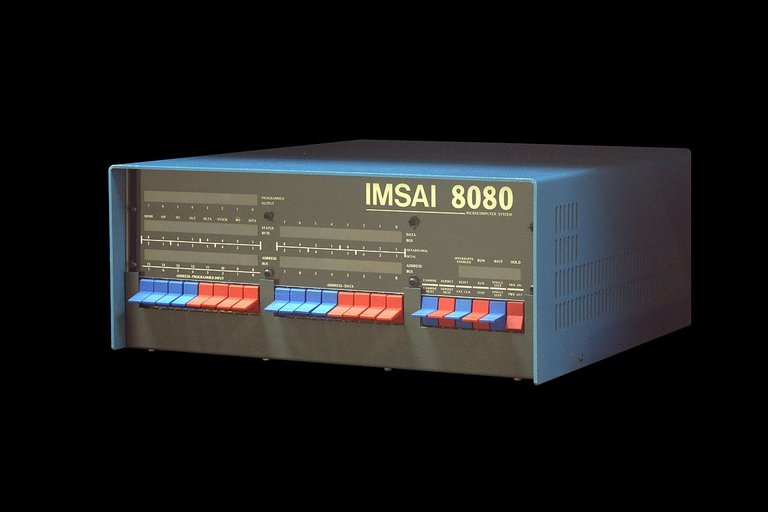I am going to take you on a brief journey back through time to an era where you had to roll your own computer if you wanted one. I built my first computer from scratch back in 1978 while I was a junior at the US Air Force Academy. Here's a list of it's 'features':
Chassis: S-100 backplane cabinet with power supply
CPU: Intel 8085 8-bit 3 MHz clock, 64 kB address space (16-bit)
Ram: 32kB + 2kB (cpu card) + 1kB (video card)
Display: RCA 12” B&W TV - 64 characters x 16 lines ASCII text
Video: Processor Technology VDM-1 memory mapped video card
Storage (initial): Tarbel Tape Controller + cassette tape player (using the remote microphone and headphone jacks for I/O)
Storage: 8” 256 kB single sided / single density floppy (added later)
I learned my electronics helping my dad fix TVs in the garage at home. I would test tubes, help align the picture tube, and if need be, pull the picture tube out of the set and put the new one back in (my dad was in a wheelchair thanks to an ambush during the Korean war). He taught me how to read a schematic before I was in high school. That helped me get my first job while I was high school -working in an electronic parts store getting parts from the shelves for customers. You can learn a lot just asking them about their project :)
In the picture of my desk below you can see the 'monitor' and keyboard in the yellow square and the blue computer on the lower shelf in the red square. This was taken in 1979. I think I was the only person at the school at the time that had a computer on their desk. To work on a computer (a mainframe for most people) you had to go the computer science department in Fairchild Hall (the academic building) or to a terminal room in the dorm (just one in each dorm building!). Note the lack of any kind of network connectivity - that simply didn’t exist at that time (as we understand it today).

My dorm room desk. [my photo]
How it was built
A friend from high school hand-drew the CPU card schematics at his kitchen table over the course of two nights while I was home on leave (I wish I had those today!). Then we went to a parts store and bought a bag-o-parts. When I got back to school, I ordered the cabinet which included a power supply and an S-100 backplane similar to the one shown in the picture below. Each slot would hold one card. Each card was about 5” x 10”. My machine (eventually) had these cards:
- CPU card (with boot ROM, 2k of 'scratchpad' memory [2114's] and the keyboard port). This card was wire-wrapped (Each chip was in a socket and each socket had long square posts. A thin wire was twisted on one pin post to another pin post - a point to point connection for each pin on the board! Only power pins were soldered)
- VDM-1 video card (made from a kit). I took the video output and injected it into the video pre-amp in the TV to bypass the RF converter and audio filter to get the best display.
- Two 8 kB memory cards. The 2102 memory chips were stacked two high to make each card 16 kB for a total of 32 kB.
- Tarbel tape controller (also a kit)
- Tarbel disk controller (yet another kit). The drive was a bare drive and I made my own power supply for it.

An S-100 backplane (By Cromemco - Own work, CC BY-SA 3.0, https://commons.wikimedia.org/w/index.php?curid=27000270)
After I finished wire-wrapping the CPU card, I mailed to my friend who checked it out in his IMSAI 8080 (like the picture below. My computer did not have the front panel lights and switches like shown here). Yep, he was a first-class geek (did I mention he was self-taught?). He fixed some errors I made and added a couple of signals he forgot, added a 8 kB UV- EPROM that contained the boot routine, a line editor and an 8080 macro assembler (Yes - in one 8k ROM!). Then he mailed it back. By then I was working on assembling my other cards. The most amazing part was that it actually worked when I was done putting it all together!


So what could I do with it? Not a whole lot. I learned to code in 8080 assembly language, later had the FORTH programming language on it, as well as 24k Basic (just not at the same time!). But what I LEARNED from it was tremendous! Building a system piece by piece really teaches you what each chip and signal does.
Today you can go online, order a Raspberry Pi Zero for a fraction of what a single bare S-100 card cost me back then and have an order of magnitude (or more!) more capability in your shirt pocket than my desktop machine could even conceive of!
Where do you think will technology be 40 years from now?
I have other topics I plan to write about (as time permits!):
Space Weather
My Calculator Collect
Ham Radio
Free Energy
... and who knows what else might inspire me! Stay tuned....
How were people able to live with these slow machines by their side? RAM with Kbs of space? Kb!!! I have 4Gb and I need more on my computer xD I don't even want to imagine the load times back then.
I had my first computer before I could even write, it was the family's computer, a commodore amiga if I'm not mistaken (I was rly young), played pre historik 2, prince of persia, and so many 2D games...so many good memories of that computer, I always lived with computers, it's literally a small window into another whole world!
If I wasn't saving money to buy more crypto I would probably be buying a whole new computer minus the GPU.
What madness are the changes in technology, how it evolves so fast in its mechanism does not? I had a new Sony as the first computer haha
Hola! When personal computers were rapidly changing in the ‘early days’, I had a saying that kept me from upgrading with every generation: “Better is the enemy of Good Enough. If what you have is good enough, you don’t need better.” At least now the rate of change has slowed down to something manageable!
The generations change markedly, now there are 5-year-old children using the best computers and I am shocked but well, they will grow with technology
Arg! After posting this I realized that I forgot to mention the operating system was CP/M (https://en.wikipedia.org/wiki/CP/M) loaded in the ROM. Sigh...
Hi jdkennedy,
Visit curiesteem.com or join the Curie Discord community to learn more.
Congratulations @jdkennedy! You have completed the following achievement on the Steem blockchain and have been rewarded with new badge(s) :
You can view your badges on your Steem Board and compare to others on the Steem Ranking
If you no longer want to receive notifications, reply to this comment with the word
STOPVote for @Steemitboard as a witness to get one more award and increased upvotes!
That is so cool! I have to laugh when I see the computer today and the one that you built at that time. You are so skilled! I am happy that I can turn on and off my computer, lol.
I have no idea where technology will be in 40 years. It's developing so fast that I can't even think of where it will be. But I guess that sky is the limit :)
Thank you for sharing details of your project :) Have a lovely day!
Amazing memories @jdkennedy
My first computer was C-64 and till today I miss this piece of junk :)
Cheers
Piotr